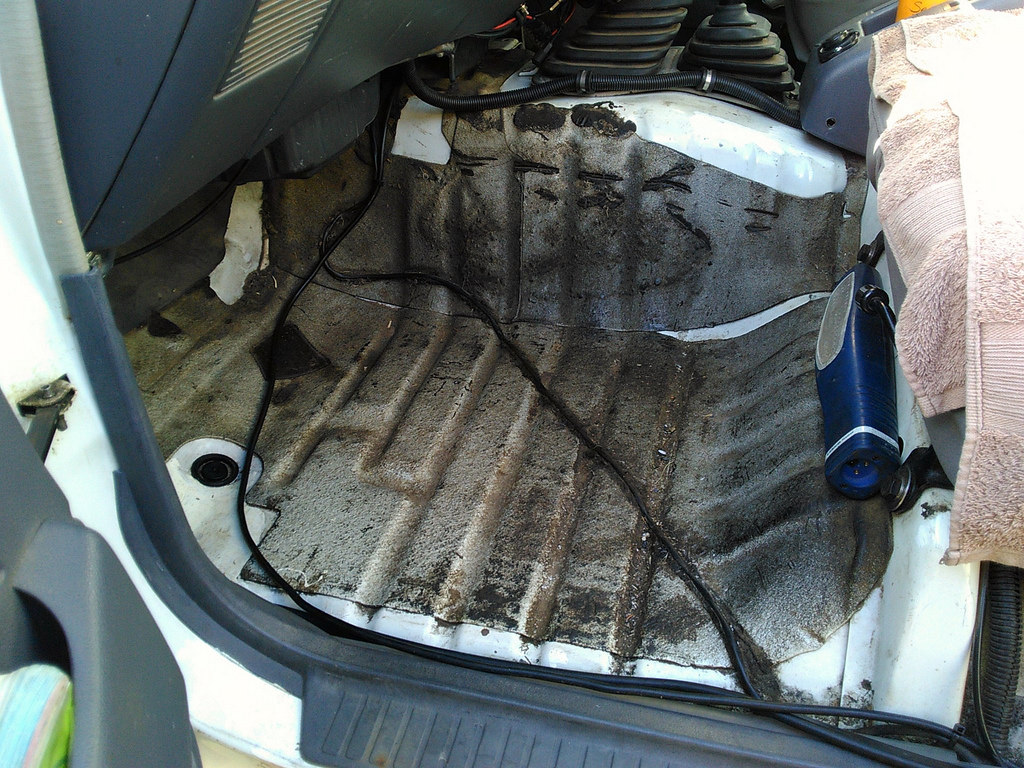Last week I ordered a set of Tru-Fit vinyl flooring, some resomat, and some premium underlay (not the felt stuff) to commence re-doing the interior floors.
I need to address the lack of NVH + heat insulation on the floor as well as not having any floor covering at all in the front seat area except an old car mat and the original factory-fitted pieces of bitumeous stuff.
I'm going to pull out the front seats, console, etc. to treat surface rusting, etc. on the floor and re-coat with POR-15 white topcoat (maybe over POR 15 itself in any areas that need it) before fitting resomat to the floor with premium underlay over that before new flooring itself.
I'm not having any carpet on the floors - I thought about getting new genuine toyota vinyl flooring but decided to go for Tru-fit's product instead.
I know that in the US the 'fancy' brand is Dynamat, but I'm trying out genuine Aussie product to see how it goes.
This is what the front passenger floor area looks like today with the cheapo car mat I was using removed:

flickr page
I don't know of any practical way to get all that factory-fitted stuff off the floor as it's completely adhered to the metalwork. I'm considering just giving everything (same on the drivers side) a total clean and treat any surface rusting, then apply resomat over the top including the bare metal areas, then use tru-fit's premium non-felt underlay over that, and then vinyl flooring over the underlay.
On the right (drivers) side, I've got the heat from the gearbox/transfer plus the heat from the exhaust coming in through the floor. Don't have working AC (yet) but just reducing heat + NVH noticably would be really nice for the old beast.
Craig.
I need to address the lack of NVH + heat insulation on the floor as well as not having any floor covering at all in the front seat area except an old car mat and the original factory-fitted pieces of bitumeous stuff.
I'm going to pull out the front seats, console, etc. to treat surface rusting, etc. on the floor and re-coat with POR-15 white topcoat (maybe over POR 15 itself in any areas that need it) before fitting resomat to the floor with premium underlay over that before new flooring itself.
I'm not having any carpet on the floors - I thought about getting new genuine toyota vinyl flooring but decided to go for Tru-fit's product instead.
I know that in the US the 'fancy' brand is Dynamat, but I'm trying out genuine Aussie product to see how it goes.
This is what the front passenger floor area looks like today with the cheapo car mat I was using removed:

flickr page
I don't know of any practical way to get all that factory-fitted stuff off the floor as it's completely adhered to the metalwork. I'm considering just giving everything (same on the drivers side) a total clean and treat any surface rusting, then apply resomat over the top including the bare metal areas, then use tru-fit's premium non-felt underlay over that, and then vinyl flooring over the underlay.
On the right (drivers) side, I've got the heat from the gearbox/transfer plus the heat from the exhaust coming in through the floor. Don't have working AC (yet) but just reducing heat + NVH noticably would be really nice for the old beast.
Craig.


